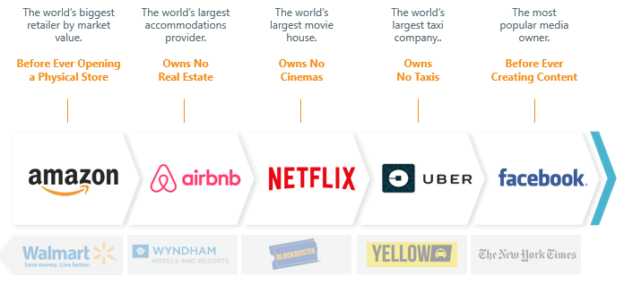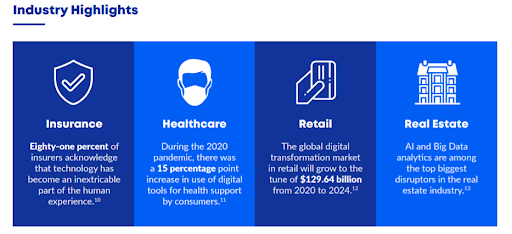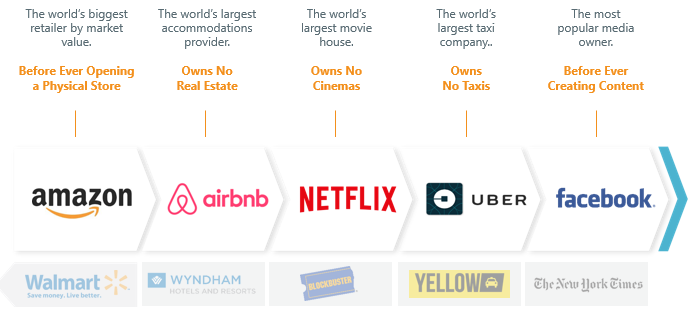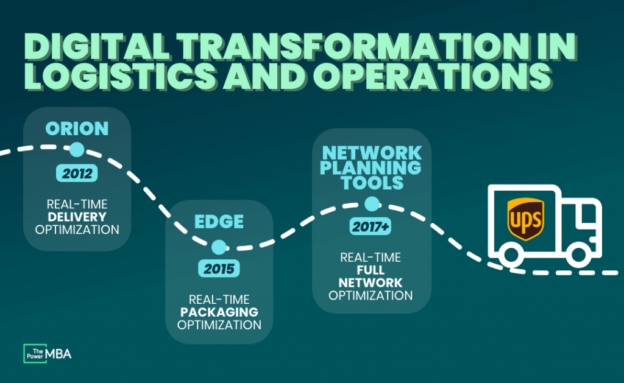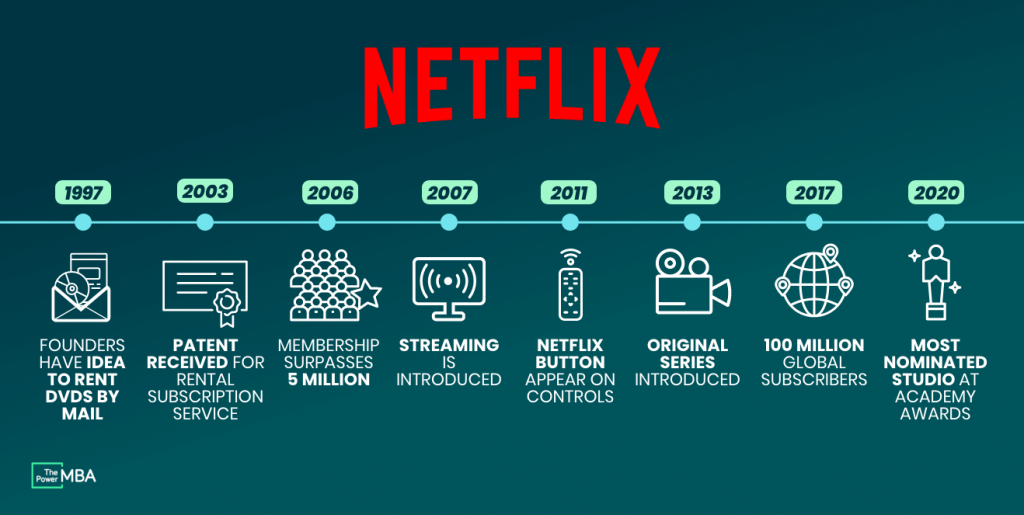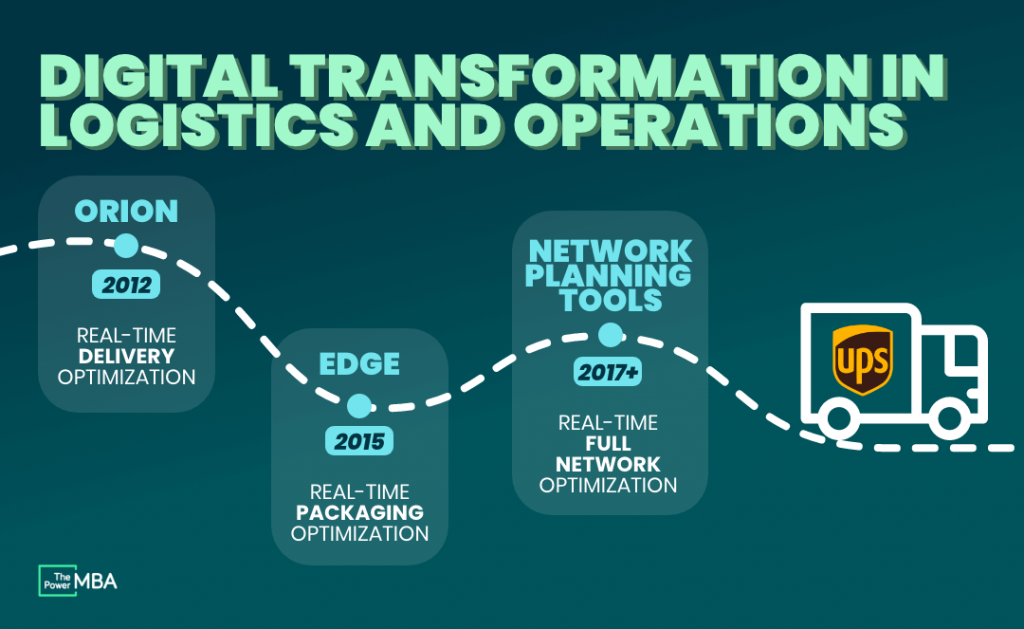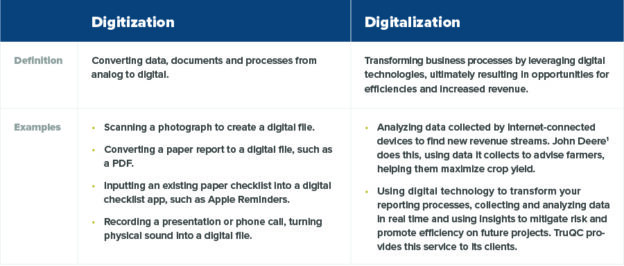So you’re curious about business digitalization and want to know what it actually looks like in action? Well, let’s paint you a picture. Imagine a small local grocery store that decides to embrace digitalization. They create a mobile app that allows customers to place orders online, provide real-time inventory updates, and offer personalized recommendations based on past purchases. With the swipe of a finger, customers can now conveniently shop for groceries from the comfort of their homes. This is just one example of how businesses are utilizing digital technologies to transform their operations and enhance the customer experience.

Example #1: E-commerce Platform
Website Development
When it comes to digitalizing your business, one of the first steps is to create an e-commerce platform. This involves the development of a website that not only showcases your products or services but also provides a seamless online shopping experience for your customers. By having an interactive and user-friendly website, you can attract more visitors, keep them engaged, and ultimately convert them into customers.
Online Catalog Management
Managing the online catalog is crucial for any e-commerce platform. It involves organizing and categorizing your products or services in a way that is easy for customers to navigate and search for what they are looking for. With digitalization, you can create a dynamic catalog that allows you to add new products, update existing ones, and provide detailed descriptions and images. This ensures that your customers have access to the most up-to-date information about your offerings.
Payment Gateway Integration
Another essential aspect of digitalizing your business is integrating a payment gateway into your e-commerce platform. This allows customers to make online payments securely and conveniently. By offering multiple payment options, such as credit card, debit card, and online wallets, you can cater to the preferences of different customers. With a secure payment gateway, you can instill trust in your customers and ensure a smooth and hassle-free checkout process.
Order Tracking and Fulfillment
One of the advantages of digitalization is the ability to provide real-time order tracking and fulfillment services. By implementing a robust order management system, you can keep your customers informed about the status of their orders, from the moment they place them to the time they are delivered. This improves transparency and customer satisfaction, as they can easily track their packages and plan accordingly.
Automated Customer Support
To enhance the customer experience and streamline your business operations, incorporating automated customer support is essential. With the help of chatbots and artificial intelligence, you can automate responses to frequently asked questions, provide personalized recommendations, and even handle simple support requests. This not only frees up resources but also ensures round-the-clock availability of customer support, improving customer satisfaction and loyalty.
Example #2: Customer Relationship Management (CRM) System
Centralized Customer Database
Digitalizing your business involves centralizing all customer information in a CRM system. With a CRM, you can store and manage customer data, such as contact details, purchase history, and interaction history, in one place. This allows you to have a holistic view of each customer and provide personalized experiences based on their preferences, past interactions, and purchasing behavior.
Sales and Marketing Automation
By implementing a CRM system, you can automate various sales and marketing processes. This includes lead generation, lead nurturing, and follow-up activities. With automation, you can streamline these processes, saving time and effort. For example, you can set up automated email campaigns that target specific customer segments based on their interests or behavior, increasing the effectiveness of your marketing efforts.
Lead Generation and Follow-up
A digitalized business utilizes various strategies and tools to generate leads and follow up with potential customers. This can include tactics such as capturing leads through opt-in forms on your website, running targeted social media campaigns, or offering valuable content in exchange for contact information. Once you have captured leads, a CRM system can help you track and manage them, ensuring that no opportunities slip through the cracks.
Real-time Analytics and Reporting
With a digitalized business, you have access to real-time analytics and reporting tools that provide valuable insights into your sales and marketing efforts. By analyzing key metrics such as conversion rates, customer acquisition costs, and campaign performance, you can make data-driven decisions and optimize your strategies for better results. Real-time analytics also enables you to identify trends and patterns, helping you to stay ahead of the competition.
Task and Calendar Management
To ensure efficient workflow and collaboration among your team members, a digitalized business incorporates task and calendar management tools. These tools allow you to assign tasks and deadlines, track progress, and ensure that everyone is on the same page. By having a centralized system for managing tasks and calendars, you can improve productivity, avoid conflicts, and ensure timely completion of projects.
Example #3: Cloud Computing
Data Storage and Backup
Cloud computing provides businesses with the ability to store and backup data securely in the cloud. Instead of relying on physical servers and hardware, cloud storage allows you to store your files, documents, and databases online. This eliminates the need for expensive infrastructure investments and provides scalability, as you can easily increase or decrease your storage capacity as needed. Additionally, cloud storage ensures data redundancy and backup, reducing the risk of data loss.
Scalable Computing Power
Another benefit of cloud computing is the ability to access scalable computing power on demand. Instead of investing in expensive hardware and servers, you can leverage the computing resources of cloud service providers. This allows you to scale up or down your computing power based on your needs, whether it is during peak seasons or for specific tasks that require heavy processing. With this flexibility, you can save costs and ensure optimal performance.
Remote Collaboration
Cloud computing enables remote collaboration among team members, regardless of their physical location. With cloud-based collaboration tools, such as document sharing and real-time editing, multiple team members can work on the same project simultaneously. This improves productivity, eliminates version control issues, and promotes seamless communication and collaboration. Whether your team members are working from different offices or are spread across the globe, cloud computing facilitates effective collaboration.
Software as a Service (SaaS)
Digitalization often involves migrating from traditional software installations to Software as a Service (SaaS) solutions. SaaS allows businesses to access software applications or tools over the internet, eliminating the need for installation and maintenance on individual devices. This not only reduces upfront costs but also ensures that users always have access to the latest updates and features. SaaS applications are typically accessible from any device with an internet connection, providing convenience and flexibility.
Disaster Recovery
In the event of a disaster or system failure, having a robust disaster recovery plan is crucial for business continuity. Cloud computing offers reliable and secure disaster recovery solutions. By duplicating your data and applications on remote servers in different geographical locations, you can ensure that your business can quickly recover from any unforeseen events. Cloud-based disaster recovery also provides automatic backups and the ability to restore data and applications within minimal downtime.
Example #4: Supply Chain Management (SCM) Software
Inventory Management
One aspect of digitalizing your supply chain is implementing inventory management software. This allows you to track and manage your inventory in real-time, from the moment it enters your system until it is delivered to the customer. With inventory management software, you can optimize your stock levels, reduce carrying costs, and ensure that you always have the right amount of inventory available to meet customer demand.
Order Processing and Tracking
To streamline your supply chain, digitalization involves automating order processing and tracking. This means integrating your order management system with your inventory management system and logistics providers. By automating the order processing workflow, you can reduce errors, improve order accuracy, and fulfill orders faster. Real-time order tracking also enables you to keep your customers informed about the status of their orders, enhancing transparency and customer satisfaction.
Supplier Integration
Digitalizing your supply chain also involves integrating your systems with your suppliers’ systems. This allows for seamless communication and collaboration, ensuring smooth order fulfillment and inventory replenishment. By connecting with your suppliers digitally, you can receive real-time updates on stock availability, pricing, and delivery schedules. This integration eliminates manual processes, reduces errors, and increases efficiency in the supply chain.
Demand Forecasting
Accurate demand forecasting is crucial for effectively managing your supply chain. By implementing demand forecasting tools and algorithms, you can analyze historical data, market trends, and other factors to predict future demand. This helps you optimize your inventory levels, production schedules, and procurement activities. With digital tools, you can automate the demand forecasting process, saving time and improving the accuracy of your forecasts.
Warehouse and Distribution Optimization
Digitalization enables businesses to optimize their warehouse and distribution operations. By using technologies such as barcode scanning, RFID (Radio Frequency Identification), and automated picking systems, you can improve the efficiency and accuracy of your warehouse operations. Additionally, route optimization tools can help you minimize transportation costs and reduce delivery times. By leveraging digital solutions, you can enhance overall supply chain performance and customer satisfaction.

Example #5: Digital Marketing and Advertising
Social Media Marketing
Digitalization has revolutionized marketing and advertising, particularly through social media platforms. With billions of active users on platforms such as Facebook, Instagram, Twitter, and LinkedIn, businesses can leverage these networks to reach and engage with their target audience. Social media marketing involves creating compelling content, running targeted ad campaigns, and interacting with customers to build brand awareness, drive website traffic, and generate leads.
Search Engine Optimization (SEO)
Digitalization also includes optimizing your website and online content for search engines. Search Engine Optimization (SEO) is the process of improving your website’s visibility and rankings in search engine results pages. By implementing SEO techniques, such as keyword research, on-page optimization, and link building, you can increase organic traffic to your website. Higher visibility in search engines translates into more potential customers discovering your business.
Pay-per-click (PPC) Advertising
Pay-per-click (PPC) advertising is another effective digital marketing strategy. With PPC, businesses can place ads on search engine results pages, social media platforms, or other websites and only pay when users click on their ads. This allows for precise targeting and budget control. By running PPC campaigns, you can instantly drive traffic to your website, increase brand visibility, and generate leads. PPC advertising also provides valuable insights and analytics to optimize your campaigns.
Email Marketing Campaigns
Digitalization has transformed traditional email marketing into a powerful and personalized communication tool. By leveraging customer data and segmentation, businesses can send targeted email campaigns to specific customer segments. This allows for customized messaging, product recommendations, and exclusive offers. Email marketing campaigns can be automated, ensuring consistent communication with customers and nurturing leads throughout the customer journey.
Conversion Rate Optimization
Digitalizing your marketing efforts also involves optimizing your website and online channels for conversions. Conversion Rate Optimization (CRO) is the process of improving the percentage of website visitors who take a desired action, such as making a purchase or filling out a form. By analyzing user behavior, conducting A/B testing, and making data-driven changes to your website and marketing campaigns, you can increase conversion rates, maximize the return on investment, and improve overall business performance.
Example #6: Robotic Process Automation (RPA)
Automated Data Entry
Robotic Process Automation (RPA) involves the automation of repetitive and rule-based tasks that were traditionally performed by humans. One example of this is automated data entry. By using software robots or “bots,” businesses can extract data from various sources, such as documents or web forms, and populate it into the relevant systems or databases. This eliminates manual data entry errors, ensures accuracy, and frees up employees for more strategic work.
Workflow Management
RPA can also streamline and automate workflow management. By automating the flow of tasks and information between different departments or systems, businesses can eliminate manual handoffs and delays. RPA can automatically route tasks, notify responsible parties, and provide real-time visibility into the status of workflows. Automation improves efficiency, reduces bottlenecks, and ensures that tasks are completed in a timely manner.
Report Generation
With RPA, businesses can automate the generation of reports, saving time and reducing the risk of errors. Instead of manually collating data from different sources and creating reports, RPA can pull data from databases, analyze it, and generate custom reports according to predefined formats. This allows for faster report generation and enables employees to focus on analyzing the data and making informed decisions.
Invoice Processing
Manual invoice processing can be time-consuming and prone to errors. RPA can automate invoice processing by extracting relevant information from invoices, matching them with purchase orders or contracts, and initiating the payment process. By automating the entire invoice processing workflow, businesses can reduce processing times, improve accuracy, and gain better control over their accounts payable processes.
Customer Service Chatbots
RPA has also revolutionized customer service through the use of chatbots. Chatbots are computer programs that simulate human conversations and provide automated responses to customer queries. By using RPA technology, chatbots can understand natural language, provide instant responses, and even perform actions such as resetting passwords or checking order statuses. This enables businesses to provide round-the-clock customer support, reduce response times, and improve customer satisfaction.
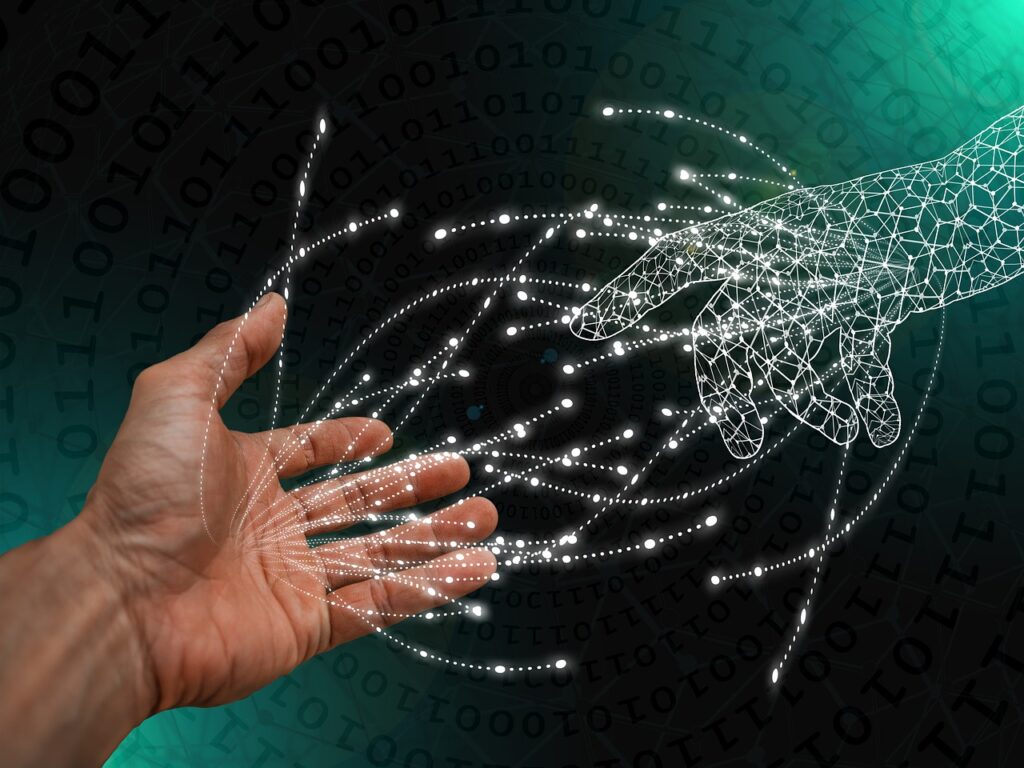
This image is property of pixabay.com.
Example #7: Internet of Things (IoT)
Smart Sensors and Devices
The Internet of Things (IoT) refers to the network of interconnected devices and sensors that gather and exchange data over the internet. By integrating smart sensors into products or equipment, businesses can collect real-time data on various parameters, such as temperature, humidity, or usage patterns. This data can be used to optimize operations, improve product performance, or enable predictive maintenance.
Real-time Data Monitoring
With IoT, businesses can monitor and analyze data in real-time. By capturing data from IoT devices and sensors, businesses can gain insights into their operations, identify patterns, and make informed decisions. For example, in a manufacturing environment, real-time monitoring can detect anomalies or equipment failures, allowing for immediate action and minimizing downtime.
Predictive Maintenance
IoT enables businesses to implement predictive maintenance strategies by analyzing data collected from IoT devices. By monitoring the performance of equipment or assets, businesses can predict when maintenance or repairs are required before a failure occurs. This reduces unplanned downtime, extends the lifespan of assets, and improves operational efficiency.
Asset Tracking
IoT can also help businesses track and manage their assets in real-time. By attaching IoT-enabled tags or sensors to assets, such as vehicles, equipment, or inventory, businesses can monitor their location, condition, or availability. This enables better asset utilization, reduces loss or theft, and facilitates efficient resource allocation.
Energy Efficiency Optimization
Digitalization through IoT allows businesses to optimize energy consumption and reduce costs. By collecting data on energy usage from various sources, such as smart meters or sensors, businesses can uncover energy-saving opportunities and implement energy management strategies. This can include automating energy consumption based on occupancy, adjusting temperature settings, or identifying areas of wastage for improvement.
Example #8: Virtual Reality (VR) and Augmented Reality (AR)
Product Visualization
Virtual Reality (VR) and Augmented Reality (AR) offer immersive product visualization experiences. By creating virtual or augmented environments, businesses can showcase their products to customers in a realistic and interactive manner. This can include virtual showrooms, where customers can explore products in a virtual space, or augmented reality apps that allow customers to view products in their own environment using their smartphones or other devices.
Virtual Showrooms
Virtual showrooms take the concept of brick-and-mortar stores to a digital platform. Businesses can create virtual environments where customers can explore and interact with products virtually. Virtual showrooms enable businesses to showcase their entire product range, provide detailed information, and offer a personalized shopping experience to customers.
Interactive Training Simulations
Virtual Reality (VR) and Augmented Reality (AR) can be used to create interactive training simulations for employees. Instead of traditional training methods, employees can be immersed in virtual scenarios that simulate real-life situations. This allows for hands-on learning and practice in a safe environment. Interactive training simulations can be particularly useful for complex processes or equipment that require specialized knowledge or skills.
Remote Collaboration and Support
VR and AR technologies can facilitate remote collaboration and support. By using virtual meeting rooms or augmented reality collaboration tools, team members can work together in real-time, regardless of their physical location. This enables businesses to tap into global talent, reduce travel costs, and increase productivity. Additionally, VR and AR can be used for remote support, where experts can guide and assist colleagues or customers through virtual interactions.
Personalized Shopping Experiences
Digitalization through VR and AR offers customers personalized shopping experiences. By using these technologies, businesses can create virtual or augmented environments where customers can customize products, visualize how they would look in their own space, or receive personalized recommendations based on their preferences. This enhances the customer experience, increases engagement, and improves customer satisfaction.

This image is property of pixabay.com.
Example #9: Artificial Intelligence (AI) and Machine Learning (ML)
Predictive Analytics
Artificial Intelligence (AI) and Machine Learning (ML) can be used to analyze vast amounts of data and generate predictive insights. By analyzing historical data, businesses can identify patterns, trends, or customer behavior that can be used to predict future outcomes. For example, AI and ML can be used to predict customer churn, forecast sales, or optimize inventory levels. These predictive insights enable businesses to make informed decisions and take proactive actions.
Chatbot Customer Support
AI-powered chatbots are revolutionizing customer support and engagement. By leveraging Natural Language Processing (NLP) and machine learning algorithms, chatbots can understand and respond to customer queries in a conversational manner. Chatbots can provide instant support, answer frequently asked questions, and even perform tasks such as order tracking or account management. This reduces the workload on human support teams and ensures round-the-clock availability of customer support.
Fraud Detection and Prevention
AI and ML algorithms can be used to detect and prevent fraudulent activities. By analyzing patterns, anomalies, or suspicious behaviors, businesses can identify potential fraud attempts in real-time. AI models can learn from historical data to improve fraud detection accuracy over time. This helps businesses protect their financial assets, reduce losses, and maintain the trust of their customers.
Personalized Recommendations
AI and ML algorithms enable businesses to provide personalized recommendations to customers. By analyzing customer data, purchase history, and behavior, businesses can offer customized product suggestions or content recommendations. This enhances the customer experience, increases cross-selling and upselling opportunities, and improves customer loyalty.
Sentiment Analysis
By analyzing customer feedback, reviews, or social media mentions, businesses can gain insights into customer sentiment. AI and ML algorithms can detect sentiment, emotions, or opinions expressed in text or voice data. This allows businesses to understand customer preferences, measure customer satisfaction, and identify areas for improvement. Sentiment analysis helps businesses make data-driven decisions and enhance the overall customer experience.
Example #10: Digital Payment Solutions
Mobile Wallets
Digital payment solutions encompass various payment methods, including mobile wallets. With mobile wallets, customers can store their payment card or bank account information on their smartphones and make purchases by simply tapping or scanning their devices. Mobile wallets offer convenience, faster checkout experiences, and enhanced security by replacing physical payment cards with encrypted digital tokens.
Contactless Payments
Contactless payments utilize Near Field Communication (NFC) technology to enable secure and quick transactions. By tapping or waving their payment cards or mobile devices near contactless-enabled point-of-sale (POS) terminals, customers can make payments without the need for physical contact or inserting their cards into the terminal. Contactless payments improve checkout speeds, reduce queues, and provide a seamless payment experience.
Peer-to-Peer (P2P) Transfers
Digital payment solutions also facilitate Peer-to-Peer (P2P) transfers, allowing individuals to send and receive money directly from their bank accounts or digital wallets. P2P transfers eliminate the need for physical currency or checks, making it convenient to split bills, repay debts, or send money to friends and family. P2P transfers can be done through mobile apps, online banking platforms, or specialized P2P payment services.
Cryptocurrency Integration
Digital payment solutions have expanded into the realm of cryptocurrencies. Businesses can integrate digital currencies, such as Bitcoin or Ethereum, into their payment systems, allowing customers to make purchases using these alternative forms of payment. Cryptocurrency integration provides additional payment options, enables borderless transactions, and appeals to customers who prefer decentralized and secure payment methods.
Subscription Billing
Subscription billing is a digital payment solution that allows businesses to charge customers on a recurring basis for access to products or services. By implementing subscription billing systems, businesses can automate the billing process, manage customer subscriptions, and provide a seamless payment experience. Subscription billing is particularly suitable for businesses offering software as a service (SaaS) or digital content, enabling predictable and recurring revenue streams.
In conclusion, there are numerous examples of digitalization in various aspects of business operations. From e-commerce platforms and customer relationship management systems to cloud computing and supply chain management software, digitalization offers a wide range of benefits including improved efficiency, enhanced customer experiences, and data-driven decision-making. By adopting digital solutions, businesses can stay ahead of the competition, optimize their operations, and thrive in the digital age.

This image is property of pixabay.com.

